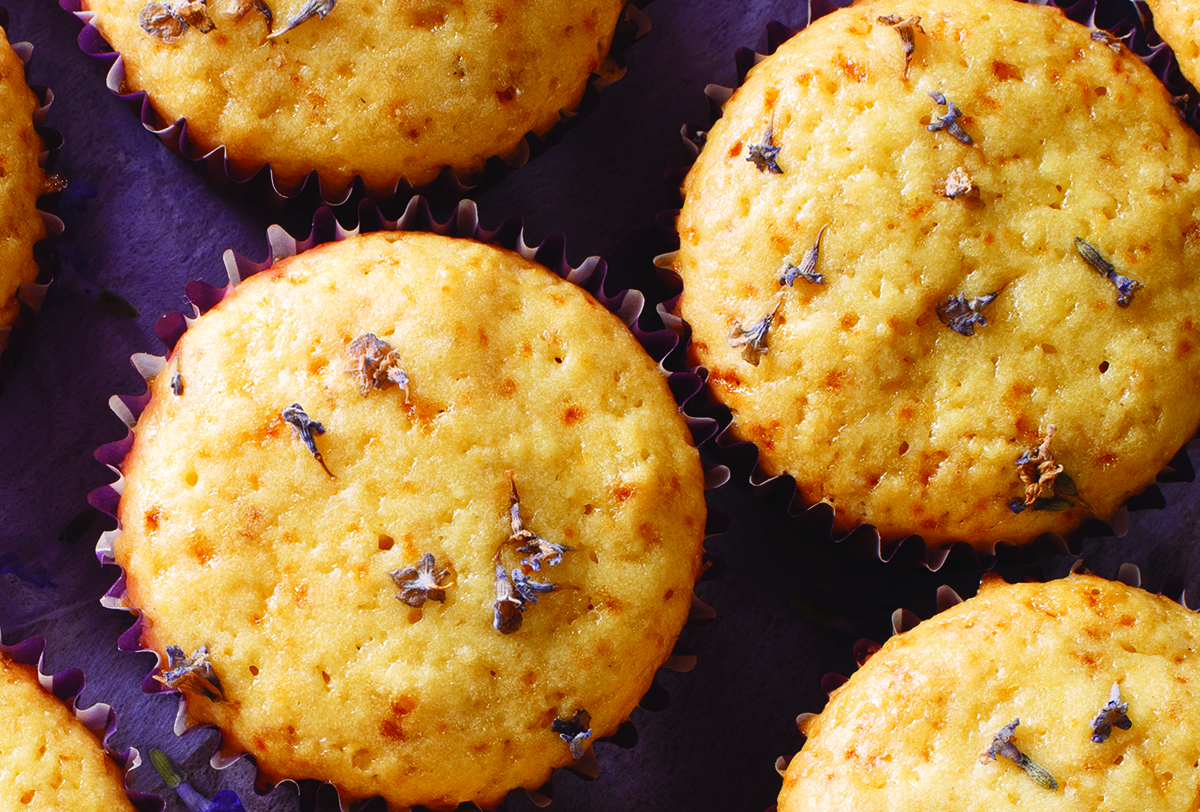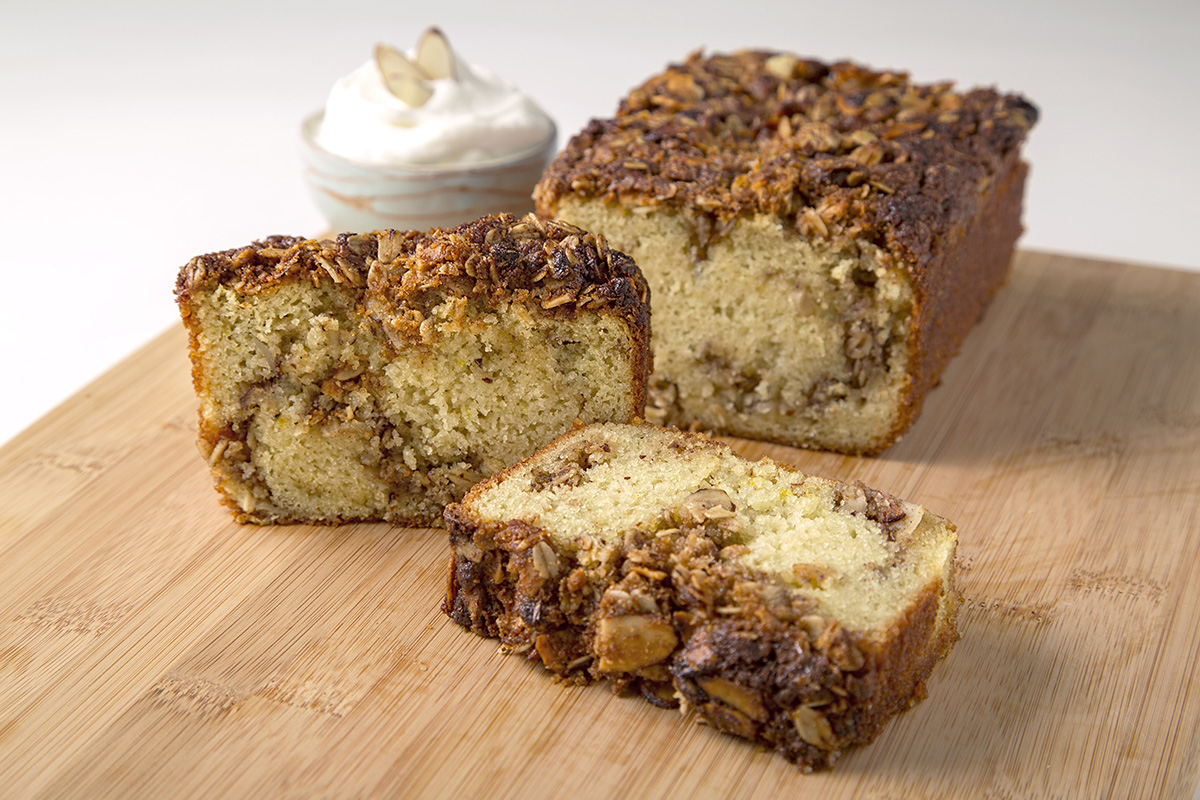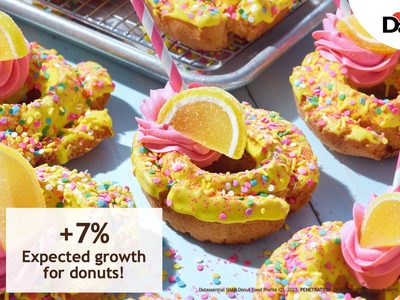Inclusions play a key role in the bakery. They provide an eating experience with many layers – taste, texture, visual appeal, nutrition and formulation. They are also an easy and cost-effective way to boost your baked goods.
“Inclusions are a fast, economical way to innovate,” says Dennis Reid, vice president of marketing at Inclusion Technologies Inc. “When done right, it adds a signature stamp and creates a new product.”
Curt Wagner, a corporate chef for General Mills Foodservice with more than 30 years of baking experience, agrees that inclusions are a simple and economical solution to boosting bakery items.
“Absolutely. If added strategically, an inclusion could increase selling price as well as give you the next hot trend,” he says.
It is imperative that bakers strike a balance when pairing an inclusion with a bakery item. The inclusion(s) should round out the product and serve a purpose. Taste is paramount, but offering a product that is visually appealing and features a textural element can satisfy what customers are looking for in a treat.
“The sky is the limit here, all the above are encompassing, plus everyone wants to feel as though they are getting added value and inclusions are a great way to get that,” says Wagner.
An example Wagner gives is caramelized cocoa nibs and freeze-dried raspberries in a chocolate bar. The nibs contribute crunch and chocolate notes and the raspberries a sweet and tart taste. But you need to be sure to use a chocolate with fruity notes to round out the umami in the finished product.
Wagner also suggests creating an entire cheese course in one bite. A beautifully crusted loaf of bread studded with dried fruits and nuts, and flavors of exotic cheeses punctuate the experience rounded out with a glass of the wine of your choice.
When pairing an inclusion with a bakery item, it’s important to remember that consumers expect indulgent products to feel “worth it.” When they choose to indulge, they want the product to score high marks on taste and texture.
“Inclusions can help deliver on the desire for over-the-top experiences, and premium ‘hero’ pieces that contain a variety of textures—crunchy cookies and pretzels; smooth and decadent fillings; and rich, melt-in-your-mouth chocolate—are popular inclusions for sweet goods like cupcakes and donuts,” says Paula Labine, marketing director, milling & starch, at Archer Daniels Midland (ADM).
Trends in the market

Dried fruits, such as apricots, banana chips, coconut, cranberries, mangos, papayas and pineapples, remain popular in the inclusions market. They align with consumer demand for recognizable ingredients from a natural source and can be paired with other inclusions to offer interesting flavor combinations that delight consumers. According to Labine, one way to accomplish this is with a sweet bun with banana chips and macadamia nuts. It delivers a desirable crunch from the nuts, sweetness and chewiness from the banana and nutrients that naturally occur in these inclusions to boost the overall nutrient profile of the product.
Dried fruit inclusions can bring natural sweetness and an added burst of flavor to baked goods, but often come with hidden added sugars. For the health-seeking crowd, try to find sugar and calorie reduction in dried fruits and a wide variety of baked good toppings and applications. ADM’s OutsideVoice℠ research finds that 39% of consumers say reduced sugar is important while 46% say no added sugar is important to them.
The softer texture of dried fruits (or chocolate, an ever-popular inclusion) can be complemented well by hard and crunchy inclusions like almonds. Mouthfeel can influence consumer decision-making, which has led to manufacturers experimenting more with this balance in their bakery formulations.
“The juxtaposition of sweet and savory continues to be a popular inclusion trend, as consumers seek new and original flavor experiences,” says Laura Gerhard, director of strategy and marketing for Blue Diamond Almonds Global Ingredients Division. “Roasted almonds can be paired with ingredients like sea salt or high cacao chocolate to add a more premium product positioning.”
According to Gerhard, because almonds come in so many forms—including sliced, diced, slivered and split—they are ideal for adding texture within bars, cookies and breads, or as a premium topping for cakes, pies and muffins. Almond butter also makes for a creamy, smooth filling for bars, complementing the crunch of sliced or slivered almonds that might be used as an inclusion or topping.
Paula Labine of ADM also points out the trendiness of nut inclusions. “They can deliver protein from a plant source for sustained energy, a commonly sought-after benefit in snacking options. Peanuts, pecans, brazil nuts, cashews, macadamia nuts, pine nuts, pistachios and walnuts can all help product developers enhance the energy-boosting properties of baked goods.”
In addition to nuts, seeds, whole grains and ancient grains are on-trend inclusions that enhance the nutrient profile of baked goods in addition to improving the finished product eating experience.
“Today’s consumers are looking for options that go beyond delivering a satisfactory sensory experience to products that offer recognizable ingredients from nature and an appealing nutrition label,” Labine says.
The health factor

Labine points out that a key purchase driver influencing consumers in 2020 is desire for options that fit with a health and wellness-oriented lifestyle. Health-forward inclusions that are also indulgent can increase the perceived value of products. Functional ingredients like dietary fiber and pre- and postbiotics can help brands further increase purchase appeal of bakery items when other health-signaling ingredients like rolled oats and dried fruit inclusions are part of the formulation.
“One way product developers can enhance the health and wellness appeal of baked goods is by enrobing inclusions with a coating that includes microbiome supporting elements,” she says. “For example, yogurt covered raisins or pretzel pieces can deliver pre- and probiotics via the coating.”
ADM’s OutsideVoice℠ research shows that fiber and protein are the top two ingredients consumers are seeking to add to their diets, and whole grains, nuts and seeds also rank highly.
Nuts can be an appealing inclusion for any product positioned as healthier or better-for-you, especially given the increased interest in plant-based ingredients and high-protein snack options. They are simple and recognizable, so consumers know they offer important nutritional benefits. Almonds especially are a value-add inclusion that contributes to a positive “health halo” that affects consumer decisions.
“Compared with other tree nuts, almonds contain the most protein (6g) and fiber (4g) per ounce,” says Laura Gerhard of Blue Diamond Almonds. “They are an excellent source of Vitamin E and magnesium and a good source of calcium, riboflavin, potassium and phosphorous. Almonds also boast a heart-healthy fat profile, with 13 grams of “good” unsaturated fat and only 1 gram of saturated fat in every ounce.”
When considering better-for-you inclusions, product positioning should line up to the actual eating experience. Products featuring high-quality ingredients and optimized processing conditions have the best chance of meeting sophisticated consumer expectations. For example, a product that highlights sustained energy really needs to deliver that benefit, Labine says.
Exotic flavors
ADM’s research finds that with consumers more interconnected than ever, desserts and pastries are being influenced by exotic flavors. Demand for globally inspired food experiences provides plenty of opportunities within the dessert and pastry categories.
“In 2020, we foresee greater acceptance and growth of tropical and exotic citrus flavors including mango, passionfruit, yuzu, calamansi, mandarin, clementine and bergamot,” says Labine. “Botanicals and florals such as hibiscus, basil, lavender, basil, thyme, and rose are emerging as well—part of a wider acceptance, especially when paired with mainstream flavors consumers already know and love.”
Flavors from Asia are especially popular right now. Ingredients such as shiso (an herb in the mint family) and yuzu (a sour mandarin citrus hybrid) are being incorporated into dishes. Botanical flavors such as rosemary, hibiscus or lavender are used to inspire baked good innovation as well.
Many of these inclusions can be paired with chocolate to truly unlock their flavor in products. The combination allows for a fresh experience and a familiar taste at the same time.





